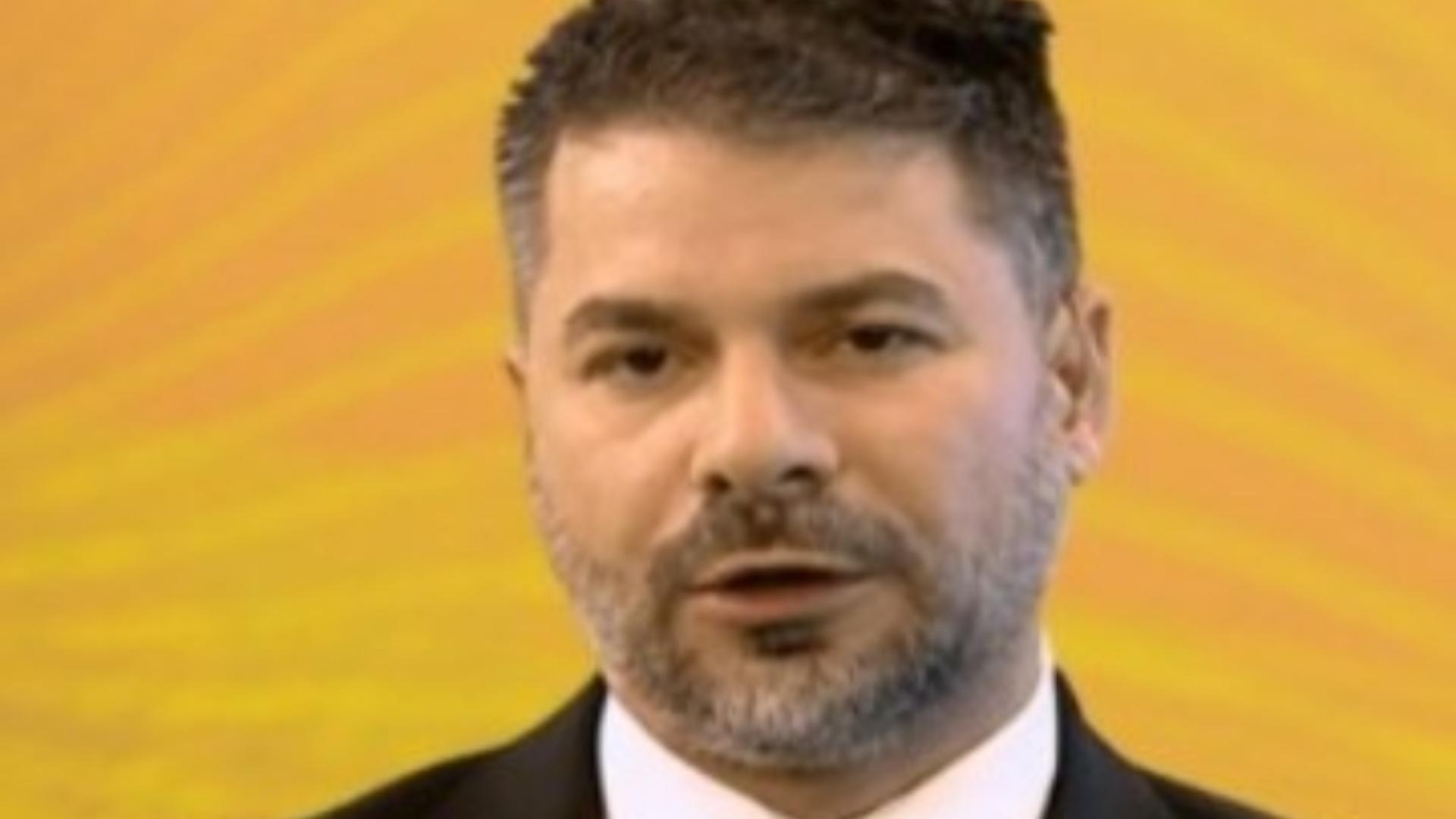San Bernardino County is receiving more than its “fair share” of state and federal revenue, and seceding from California is both unnecessary and unlikely, according to a consulting firm that’s been studying the issue for a year.
“Across all sources, over the past three fiscal years, the county has received 9% more state funding per person than other counties statewide,” a 33-page analysis by the Oakland-based Blue Sky Consulting Group reads in part.
In fiscal years 2019-20 and 2021-22, the county received an average of $829 per person in state and federal funding, compared to a statewide average of $763 per person, according to the firm.
In August 2023, the Board of Supervisors paid Blue Sky $192,400 to study “all options to obtain the county’s fair share of state and federal resources.”
The fair share question was attached to a threat: San Bernardino County could secede from California, either forming its own state or joining Nevada or Arizona, its neighbors to the east, if county residents were indeed getting short-changed by state and federal government.
Doing so would have serious consequences, according to a Blue Sky memo on the subject.
“Secession would trigger a wide variety of economic impacts countywide alongside fiscal impacts on the county government, local municipal governments, and school districts,” the firm’s 11-page memo reads in part. “State fiscal data shows that, on a per capita basis, the tax revenues generated in San Bernardino County are likely less than half the revenues generated statewide.”
In other words, more than half of the county’s revenue comes from the larger state of California, especially from state income tax. It would get less revenue as part of Nevada or Arizona, which are less affluent than California, or by striking out on its own.
San Bernardino County previewed the report Wednesday, Aug. 14, but released the full analysis Friday, Aug. 16, as part of the agenda for the Board of Supervisors’ meeting Tuesday, Aug. 20.
Though the end result of the analysis showed a mixed bag for the county, Fourth District Supervisor Curt Hagman said the resulting document is a useful tool.
“I’ve always advocated for transparency on the state level,” Hagman said Monday, Aug. 19. “Now, with that data, we can go to argue for formula changes” in how state funding is allocated.
Without Blue Sky’s analysis, Hagman said, it’s not clear whether the county would have ever received this information.
“As a former legislator, I didn’t have this information, either,” said Hagman, who served in the California Assembly from 2008 through 2014.
Back in 2022, Inland Empire legislators wrote an open letter rejecting the idea that they weren’t working hard to bring state funding to San Bernardino County.
“It’s not about us versus them,” Hagman said, “it’s about us, working together.”
County receiving ‘fair share’
Blue Sky’s analysis looked at 26 different types of revenue San Bernardino County received from other government agencies. For the most part, the county came out ahead, receiving 9% more state revenue on average than the state’s other 57 counties, according to the analysis. It comes in 36th out of 58 counties in transfers of funding from the state to the county level.
The county is ahead in the amount of money it received in prison realignment funding, which was meant to defray the costs of shifting California prisoners to local jails in response to overcrowding. San Bernardino County received $431 per county resident in fiscal year 2021-22 versus the statewide average of $406.
Between fiscal year 2019-20 and 2021-22, the county received an average of $106 per person in Proposition 172 funding, well ahead of the statewide average of $99 per person, meaning the county ranks 19th out of the state’s 58 counties. Proposition 172 is a half-cent sales tax that funds law enforcement.
The county’s public school districts, meanwhile, have received more money for facilities than the statewide average over the last 20 years, according to the analysis. During that period, the county had 6.6% of California’s public school students, but received 7.3% of state funding for facilities.
But it’s not all good news, of course.
The county has more judicial vacancies — 30 of them — than any other county in California. Statewide, there are 98 unfilled judgeships, meaning San Bernardino County accounts for nearly one-third of the vacancies.
The county received an average of $64 per person in Mental Health Services Act funding over fiscal years 2020-21 through 2022-23, compared to a statewide average of $68 per person in that same period.
And despite San Bernardino County having about 2.1% of the state’s homeless population, according to Blue Sky’s analysis, it receives 1.1% of the funding from California’s Homeless Housing, Assistance and Prevention program. It also receives less of the state’s Encampment Resolution Funds — 1.4% — than its percentage of its homeless residents.
San Bernardino County also ranks 49th out of 58 counties in the number of affordable housing units receiving federal tax credits over the past 20 years, the analysis found.
The county received $401 per user for water systems that the state classified as “at risk,” compared to an average of $485 per user statewide. Across multiple measures, since 2017, the county has received less of this funding than the statewide average, sometimes dramatically so.
And despite having about 4% of the state’s community college students, the county’s community colleges received 3.1% of the state’s capital outlay funding over the past 10 years.
The new report largely agrees with the findings of an internal analysis by San Bernardino County in fall 2022.
That analysis suggested the county was near the middle of the pack in terms of state and federal funding, per capita. At that time, county officials estimated the county received a total of $1,071 per person from the state and federal government, combined. That put it behind Los Angeles County, ranked 28th, but ahead of more wealthy counties such as Santa Barbara (52nd) and Orange (55th).
Secession costly
The threat of secession was on the table if San Bernardino County wasn’t receiving its fair share. A memo drafted by Blue Sky suggests that would be a bad idea and almost impossible to pull off.
“Not since 1861, when West Virginia seceded from Virginia following the outbreak of the Civil War, has a new state been created by the partition of an existing state,” the memo reads in part.
San Bernardino County seceding would require the approval of the state Legislature and U.S. Congress, probably including a filibuster-proof 60-person majority of the U.S. Senate, according to Blue Sky’s memo. The legislature of any state that San Bernardino County hoped to join would also need to give its consent.
“The relative difficulty of this step in the secession process is uncertain, as there is no precedent for it,” the memo reads in part. “All previous state partitions led to the creation of new states; a pre-existing state has never gained new territory as the result of another state’s partition.”
And if secession did happen, leaving California could mean a massive loss of revenue, as much of the state’s finances come from income tax on wealthy Silicon Valley-area residents.
According to the St. Louis Federal Reserve, in 2022, San Bernardino County had an average residential income of $49,270. In comparison, Bay Area counties had double or even triple that residential income, including $171,177 in Marin County, $155,819 in San Francisco County, $175,070 in San Mateo County and $144,399 in Santa Clara County.
San Bernardino County also has lower property values than many other parts of the state, which would likely lead to a shortfall in property tax revenues in an independent county, Blue Sky noted in its report.
“While a new state of San Bernardino could decide for itself what taxes to impose, the economic and state fiscal metrics presented … show that if the county enacted a tax system identical to California’s — i.e., the same taxes imposed at the same tax rates — the revenues generated would be much lower per person than the current system in California,” the firm’s memo reads in part.
Services for San Bernardino County residents would probably also go downhill, according to Blue Sky.
“Though secession could generate some benefits for San Bernardino County, a secession faces significant political challenges, and if accomplished, would likely result in a significant reduction in the level of government services currently enjoyed by county residents,” the memo reads in part.
According to the California State Library, there have been at least 220 attempts to split California into smaller parts. None have succeeded.
How this all started
The fair share and secession questions came up in the lead-up to the 2022 general election.
Real estate developer Jeff Burum told the county Board of Supervisors in July 2022 that the Inland Empire, one of the state’s fastest-growing areas, is consistently short-changed by Sacramento. The region isn’t getting its “fair share” of resources, he said, whether it’s investment in infrastructure or state judges. The answer, he said, was to split off from California and either form a new state called Empire or to join Nevada or Arizona as part of those states.
The question went before voters in November 2022 with Measure EE, which asked: “Do the people of San Bernardino County want San Bernardino County elected representatives to study and advocate for all options to obtain the county’s fair share of State funding up to and including secession from the State of California?”
A narrow majority – 50.62% of voters – told the board to go ahead with the study.
Campaign signs around San Bernardino County promote 2022’s Measure EE, which asks about secession from California, using the slogan “Fairness for All!.” Measure D reset county supervisors’ pay and compensation to levels higher than were set in a ballot measure passed in 2020. (File photo by David Allen, Inland Valley Daily Bulletin/SCNG)
Some have argued Measure EE was actually meant to drive voters to the polls, where they’d also have the chance to vote on Measure D, which changed the term limits and salaries for the county Board of Supervisors. Burum has previously denied the allegation.
Measure D was worded in such a way that it sounded like it was putting a salary cap and stricter term limits on the Board of Supervisors. But it actually rolled back tougher term limits approved by the voters in 2020. Measure D ended up passing with 58.22% of the vote, raising raising term limits from one to three terms and capping supervisors’ compensation at 80% of the annual $225,074 base pay for San Bernardino Superior Court judges. Two years earlier, 2020’s Measure K had cut supervisors’ pay to $60,000 a year.
The Board of Supervisors is scheduled to receive the report at its meeting at 10 a.m. Tuesday in the County Government Center, 385 N. Arrowhead Ave., San Bernardino.
More on San Bernardino County’s “fair share,” possible secession
Voters heavily favoring slashing San Bernardino County supervisors’ pay, term limits
San Bernardino County sues to stop newly approved Measure K, which cuts supervisor salaries
San Bernardino County supervisors urged to secede from California
What voters need to know about San Bernardino County’s secession measure
What to know about San Bernardino County’s latest term-limits measure
Opinion: San Bernardino County successfully tricks voters with Measure D
Is San Bernardino County getting its ‘fair share’ of state funding? Supervisors ready to find out
San Bernardino County to release report central to secession talk
San Bernardino County is mostly getting its fair share of funds, report says



















